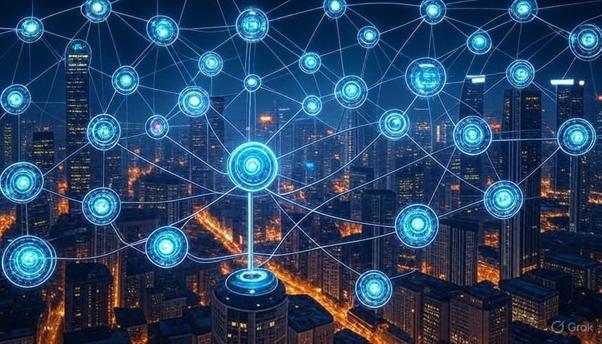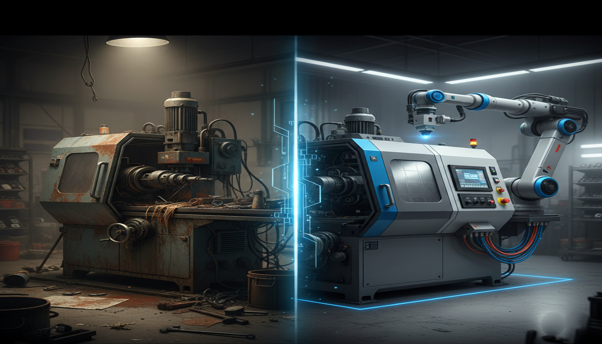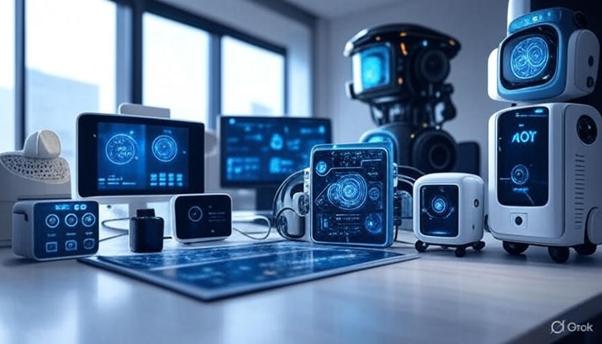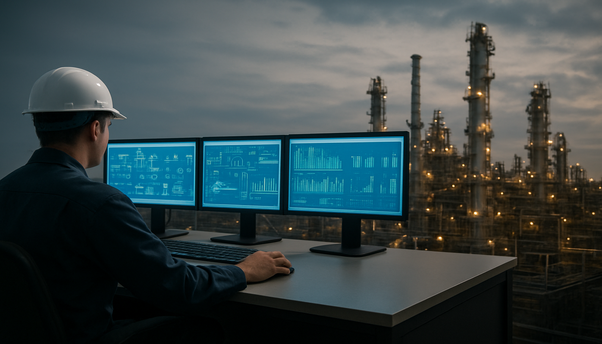The Difference Between IoT and IoE: Unlocking the Future of Connectivity
At INGSOL, we believe the future of business is being redefined by the power of connectivity. Two of the most talked-about concepts in this transformation are the Internet of Things (IoT) and the Internet of Everything (IoE). While both terms sound similar and are often used interchangeably, they represent different levels of technological evolution.
IoT is about connecting devices to the internet. IoE is about connecting everything, devices, people, processes, and data into a single intelligent ecosystem.
Let’s explore the journey from IoT to IoE in detail, unpacking how each works, their differences, and what they mean for industries worldwide.
Introduction: From Devices to Ecosystems
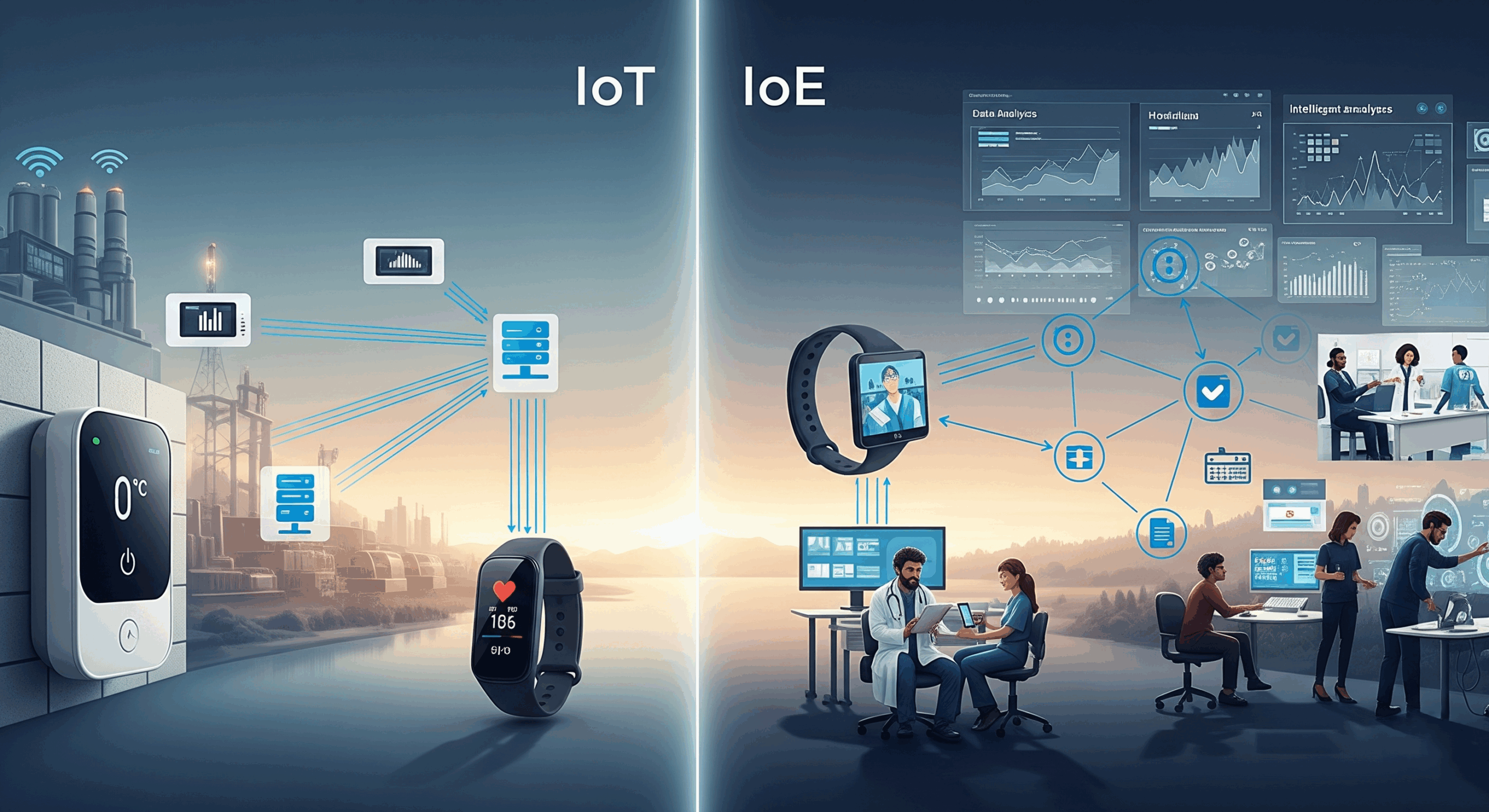
When we think about connectivity today, it’s not just about having internet access on our phones or laptops. It’s about an intelligent network of devices and systems that can sense, collect, analyze, and act in real time.The Internet of Things (IoT) is the starting point of this evolution. It connects physical objects, smart thermostats, fitness trackers, factory sensors, vehicles to the internet. These devices exchange data, automate tasks, and make life more efficient.But IoT has its limits. A smart fridge may remind you when you’re out of milk but it cannot understand your dietary needs, shopping habits, or health data. This is where the Internet of Everything (IoE) steps in.
The Internet of Everything expands beyond “things” by adding three more elements: people, processes, and data. By integrating these four elements together, IoE creates a holistic, intelligent system that adapts, learns, and responds with context.
For example, in healthcare:
- IoT: A wearable monitors your heart rate.
- IoE: That same wearable connects with your medical history, doctor’s analysis, hospital workflows, and predictive AI to adjust treatment in real time.
This shift from IoT to IoE is not just an upgrade, it’s a revolution in how connectivity drives decision-making, business models, and customer experiences.
Origins of IoT and IoE
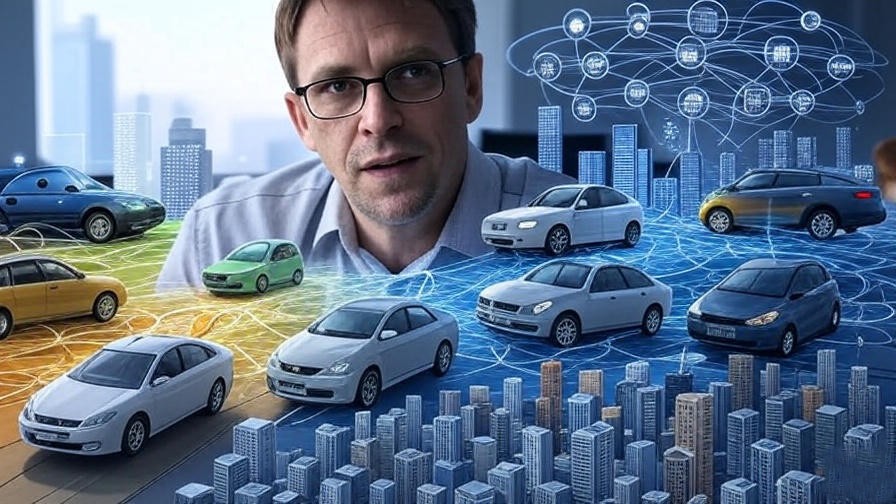
The journey of connectivity didn’t happen overnight, it has a history.
IoT Origins (1999):
The phrase “Internet of Things” was first coined by Kevin Ashton, a British technologist working with Procter & Gamble. At the time, he was exploring how Radio-Frequency Identification (RFID) tags could track products in a supply chain. His idea was simple yet powerful: what if physical objects could talk to the internet, sending data without human intervention?That idea became the seed of IoT. Over time, as sensors, wireless technology, and cloud computing advanced, IoT found its way into smart homes, connected cars, and industrial automation.
IoE Origins (2013):
Fast forward to 2013 Cisco Systems introduced the concept of the Internet of Everything (IoE). Cisco recognized that devices alone weren’t enough. For true transformation, connectivity needed to extend to people (end-users), processes (how work gets done), and data (insights that power decisions).IoE wasn’t just about automation, it was about creating intelligent networks that could deliver personalization, predictive capabilities, and systemic change.Thus, IoT became the foundation, and IoE became the vision for the future.
Core Definitions
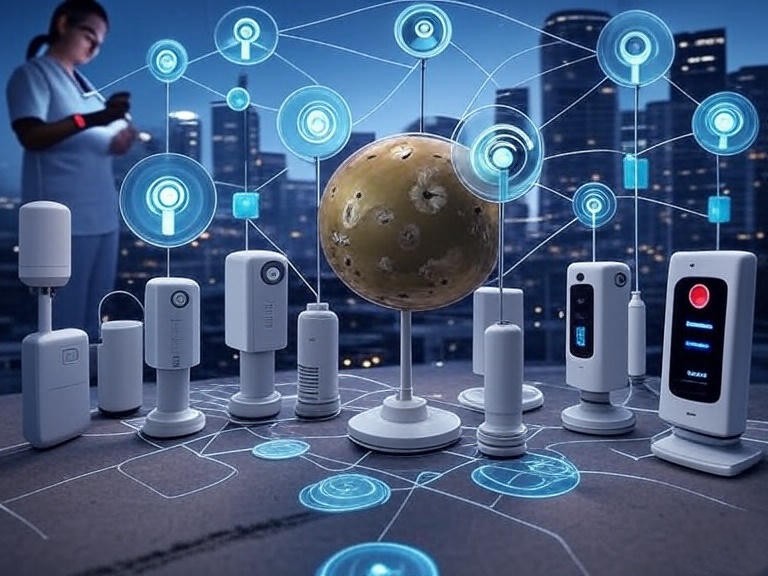
To truly understand the difference, we must look at the core definition of each term.
Internet of Things (IoT):
A network of physical devices (things) embedded with sensors, connectivity, and software that allows them to collect and exchange data. IoT primarily relies on Machine-to-Machine (M2M) communication. Example:
- A smart thermostat adjusts room temperature automatically using sensors.
- In manufacturing, IoT-enabled machines send performance data to reduce downtime.
Internet of Everything (IoE):
A broader concept that connects not only devices but also people, processes, and data. IoE transforms the raw data collected by IoT into actionable insights using advanced analytics, machine learning, and human participation. Example:
- In a smart city, IoE combines data from traffic sensors, weather systems, and citizen feedback, then uses AI-driven processes to optimize public transport and reduce congestion.
IoT = Connected devices. IoE = Connected ecosystem.
Key Differences Between IoT and IoE
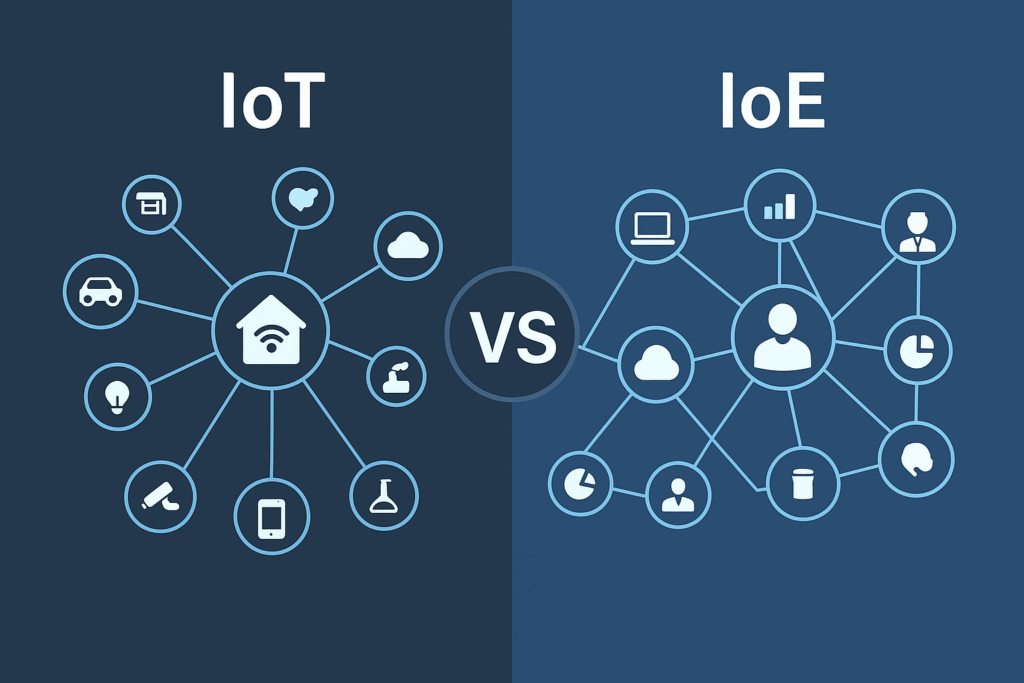
While IoT and IoE share common ground, they are not the same. Let’s break them down in detail:
1. Scope and Reach
IoT is limited to connecting physical devices for specific purposes like automating lighting, monitoring machinery, or tracking shipments. Its scope is narrower but powerful in its focus on efficiency. IoE has a far broader reach. It integrates IoT devices with people’s decisions, business processes, and massive datasets to create holistic systems. In agriculture, for example:
- IoT might control irrigation based on soil moisture.
- IoE could combine soil data, weather forecasts, farmer expertise, and market demand to recommend what crop to plant, when to harvest, and where to sell for maximum profit.
2. Communication Types
IoT is mainly about machine-to-machine (M2M) communication. Devices interact without human involvement like a sensor telling a pump to switch on. IoE introduces machine-to-people (M2P) and people-to-people (P2P) communication. This means humans are no longer passive, they are part of the ecosystem. For instance, in healthcare:
- IoT: A wearable sends your heart rate to a server.
- IoE: That wearable shares data with your doctor (M2P), who then collaborates with specialists (P2P) to adjust your treatment.
3. Complexity and Integration
IoT is simpler, it focuses on connecting devices for specific outputs. Think of a smart home system where lights, thermostats, and cameras are connected to a central hub. IoE is highly complex, it integrates not just devices but also AI, workflows, human decision-making, and contextual analysis. In a smart city, IoE would involve traffic sensors, real-time analytics, urban planning, and public input all working together dynamically.
4. Role of Data
IoT collects raw data. For example, a wind turbine sensor might report blade speed. IoE analyzes and contextualizes data. That same wind turbine’s data could be combined with weather forecasts, grid demand, and maintenance schedules to predict failures, optimize energy distribution, and reduce costs.
5. Evolutionary Relationship
IoT is the starting point. It provides the infrastructure of connectivity. IoE is the next step, a superset that builds on IoT by adding intelligence and adaptability.
If IoT is the foundation of a building, IoE is the architecture that brings it to life.
The Four Pillars of IoE
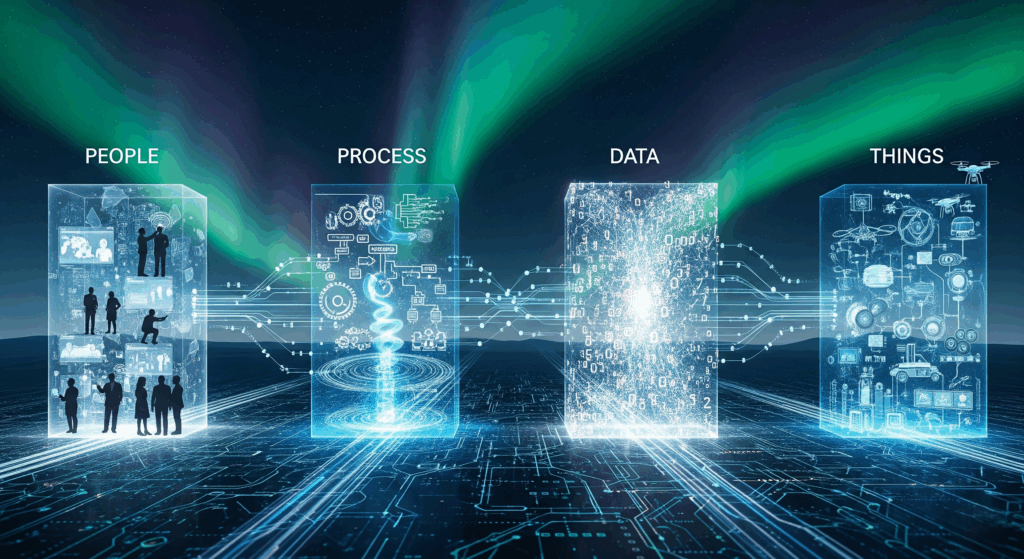
IoE rests on four essential pillars:
- People: Active participants generating and using data. For instance, in retail, customers’ shopping habits shape personalized offers.
- Process: Intelligent workflows that ensure data is delivered in the right context. In factories, processes dictate when IoT sensor alerts escalate to human technicians.
- Data: Raw data from devices becomes actionable insights through AI, machine learning, and visualization. For example, traffic data transforms into congestion predictions.
- Things: Physical devices, sensors, machines, wearables form the connectivity backbone.
Together, these elements create adaptive, context-aware systems that go beyond automation to enable human-centred decision-making.
Real-World Applications
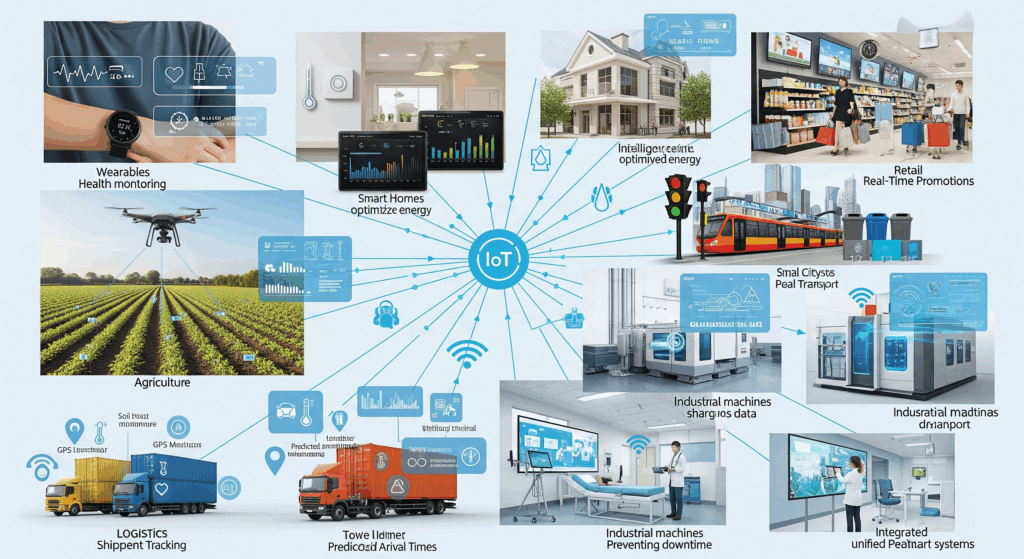
IoT Examples
- Wearables: Track fitness, sleep, and heart rate for personal health monitoring.
- Smart Homes: Appliances like fridges and thermostats optimize energy use.
- Agriculture: Sensors track soil conditions, helping farmers optimize irrigation.
- Industry: IoT machines predict failures, preventing costly downtime.
IoE Examples
- Healthcare: Integrates patient wearables, medical records, AI diagnostics, and doctor collaboration for personalized care.
- Smart Cities: Combines traffic sensors, weather data, and citizen feedback to improve public transport and reduce pollution.
- Retail: Analyzes customer shopping patterns, inventory, and supply chain data to offer real-time promotions.
- Logistics: IoT sensors track shipments, while IoE systems use AI and human decisions to reroute deliveries during disruptions.
Why the Distinction Matters
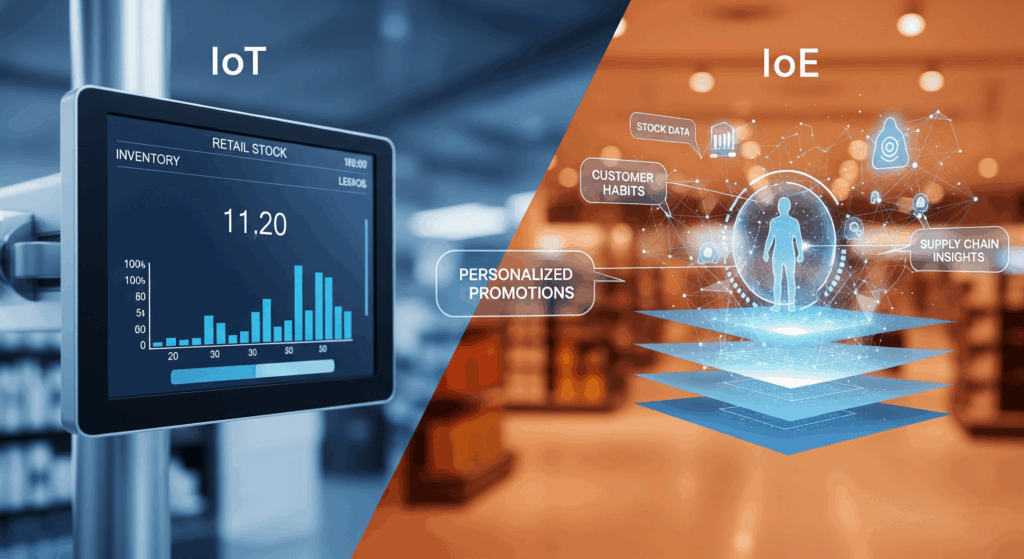
The difference between IoT and IoE is crucial for business strategy.
- IoT: Focuses on efficiency and automation. It improves processes but within limited boundaries.
- IoE: Enables systemic transformation. By connecting people, processes, and data, it creates personalized, adaptive, and innovative systems.
Example:
- IoT can monitor a retailer’s stock.
- IoE can combine stock data, customer buying habits, and supply chain insights to offer personalized promotions in real time, boosting both revenue and loyalty.
At INGSOL, we guide businesses to shift from IoT-based solutions to IoE ecosystems, because this is where true digital transformation happens.
Challenges and Considerations in Adopting IoT and IoE
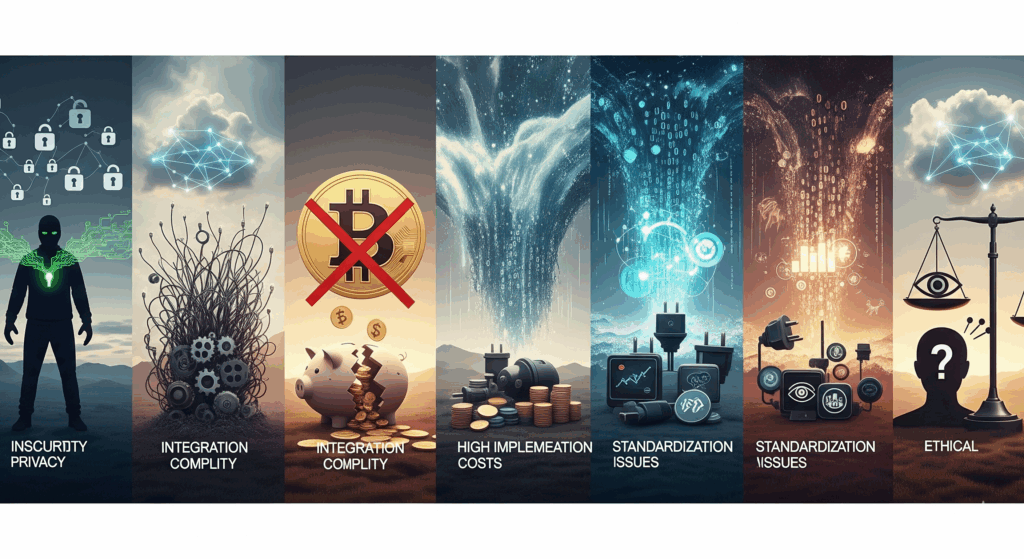
While the benefits of IoT and IoE are undeniable, organizations must also face a number of practical, technological, and ethical challenges. These challenges become more complex as businesses move from IoT (devices) to IoE (ecosystems). Let’s break them down:
1.Security and Privacy Concerns
Every new device, application, or system connected to the internet becomes a potential entry point for hackers. With IoT, vulnerabilities are already a concern think of unsecured webcams or smart appliances being hacked. Now imagine IoE, where not only devices but also personal identities, sensitive healthcare records, financial data, and organizational processes are connected. For businesses, this raises critical questions:
- How do you secure thousands (or millions) of connected endpoints?
- Who owns the data customers, companies, or third parties?
- How do you balance personalization with privacy rights?
Without robust cybersecurity strategies, IoE could become more of a liability than an asset. Encryption, zero-trust security models, regular patching, and regulatory compliance (like GDPR or HIPAA) are non-negotiable.
2.Integration Complexity
IoT alone can be implemented with standalone devices, install a sensor, connect it to a server, and you’re done. IoE, however, demands integration across multiple layers:
- Devices (hardware)
- Networks (5G, Wi-Fi, edge computing)
- Data systems (cloud storage, analytics, AI models)
- People and processes (business workflows, customer journeys)
This requires cross-functional collaboration, advanced cloud platforms, interoperability standards, and governance frameworks. Organizations often underestimate how difficult it is to synchronize so many moving parts.
3.High Implementation Costs
IoT can start small company can add a few smart sensors to track energy usage. But IoE requires large-scale investments in infrastructure, AI-driven platforms, training, and cybersecurity. Smaller businesses may find the upfront costs prohibitive, even though the long-term ROI can be significant.
4.Data Overload and Management
IoT already generates massive volumes of raw data. IoE multiplies that by adding human input, business process data, and contextual insights. The challenge isn’t collecting data, it’s filtering signal from noise. Organizations must implement advanced analytics, edge computing, and AI models to make sense of this flood of information.
5.Standardization Issues
Currently, IoT devices often use different protocols and platforms, leading to fragmentation. With IoE, the stakes are even higher. Without global standards for interoperability, scaling IoE solutions across industries and geographies could be difficult.
6.Ethical and Societal Concerns
IoE, by connecting people and processes, raises critical ethical questions:
- Should businesses be allowed to predict customer behavior using highly personal data?
- How do we prevent algorithmic bias in IoE-driven decision-making?
- What happens to jobs as IoE-driven automation becomes smarter and more adaptive?
- These aren’t just technical challenges, they’re societal debates that policymakers, organizations, and communities must address together.
Future Outlook: Where Are IoT and IoE Headed?
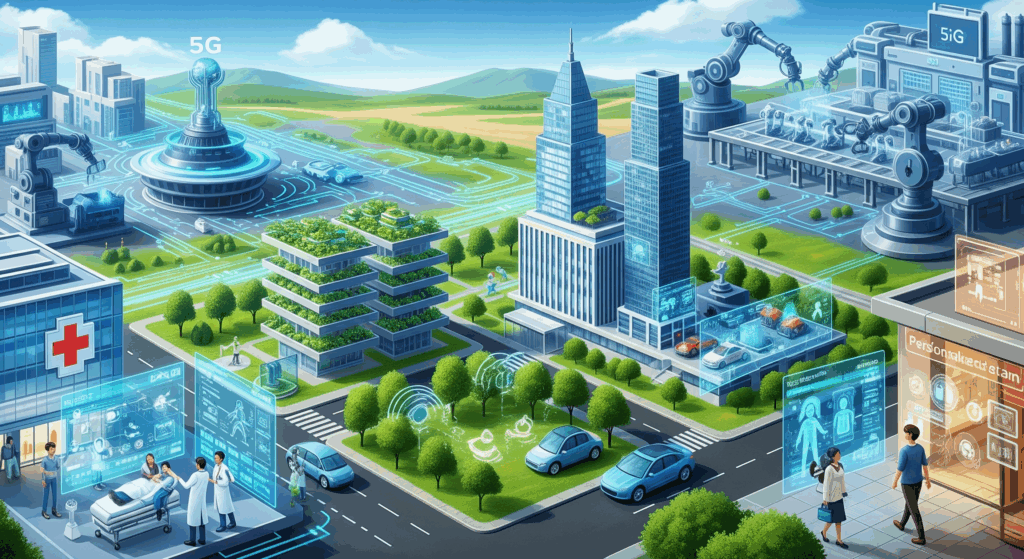
The journey from IoT to IoE is not just a technological shift, it’s a paradigm shift in how we live, work, and interact. Let’s look at where this evolution is headed:
1.The Rise of 5G and Edge Computing
5G networks provide the speed and low latency needed for real-time IoE applications like autonomous vehicles, remote surgery, or AR/VR-based learning. Edge computing will allow data to be processed closer to the source (devices, sensors, wearables), reducing delays and improving responsiveness. Together, these technologies will make IoE faster, smarter, and more reliable.
2.Healthcare Will Become Predictive, Not Reactive
With IoE, healthcare will move from treating illnesses to preventing them. Imagine:
- Wearables monitoring patients in real time.
- AI predicting risks before symptoms appear.
- Hospitals, doctors, and patients collaborating seamlessly through interconnected platforms.
This means healthcare won’t just be about curing diseases, it will be about sustaining wellness proactively.
3.Smarter and Greener Cities
IoE will enable smart urban ecosystems where traffic systems, energy grids, public services, and even waste management are interconnected. Cities will use IoE to:
- Reduce traffic congestion.
- Cut energy consumption.
- Enhance safety with predictive policing and real-time surveillance.
- Improve citizen engagement through participatory governance platforms.
This could transform urban living into something sustainable, efficient, and citizen-centric.
4.Personalized Consumer Experiences
Retailers will no longer just react to customer demand, they will anticipate it. IoE will allow businesses to analyze customer behaviors, predict preferences, and create hyper-personalized shopping experiences. For example, as you walk into a store, IoE could combine your purchase history, browsing habits, and location to offer real-time promotions tailored only for you.
5.Industrial Transformation and Autonomous Systems
Manufacturing and logistics will move beyond IoT automation into IoE-driven autonomy. This means:
- Factories self-adjusting production lines based on demand forecasts.
- Supply chains rerouting automatically when disruptions occur.
- Autonomous fleets collaborating with human supervisors in real time.
This level of adaptability could make industries more resilient, efficient, and sustainable.
6.The Ethical and Human-Centric Future
As IoE becomes embedded in our lives, the focus will shift toward building trustworthy and ethical ecosystems. Transparency, accountability, and human-centric design will determine how successful IoE adoption becomes. In the future, the organizations that thrive will not just be those who adopt IoE, but those who do so responsibly.
IoT vs IoE Across Industries
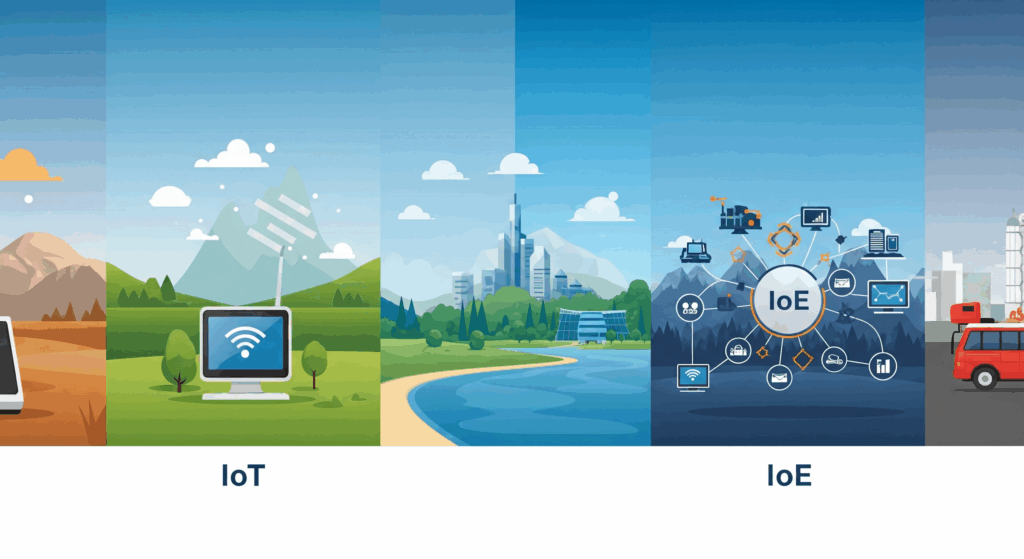
1.Healthcare
- IoT: Wearables monitoring heart rate, connected insulin pumps, hospital equipment sensors.
- IoE: Entire ecosystems integrating patient data, doctor insights, AI-driven diagnostics, and treatment workflows for personalized, preventive healthcare.
2.Smart Cities
- IoT: Traffic sensors and smart streetlights.
IoE: Traffic + weather + citizen data integrated to optimize transport, reduce pollution, and improve emergency response.
3.Manufacturing
- IoT: Predictive maintenance sensors on machines.
- IoE: Entire factories adapting production based on demand, supply chains rerouting automatically, and humans collaborating with machines for efficiency.
4.Retail
- IoT: Smart shelves that detect stock levels.
- IoE: Customer purchase data + real-time inventory + AI-driven recommendations creating personalized shopping journeys.
5.Logistics
- IoT: GPS sensors tracking shipments.
- IoE: Smart logistics integrating shipment tracking, traffic conditions, weather forecasts, and customer expectations for real-time adaptive delivery networks.
Conclusion:
The Internet of Things marked the beginning of a new era where devices could “talk” to each other, making life more efficient. But the Internet of Everything represents something much bigger a holistic, intelligent ecosystem where devices, people, data, and processes converge to create smarter decisions, proactive systems, and personalized experiences. At INGSOL, we believe businesses can no longer afford to stop at IoT. Those who invest in IoE will move beyond automation to achieve true digital transformation. IoE will redefine industries, reshape customer experiences, and build a future where connectivity is not just functional, it is intelligent, adaptive, and human-centered. The road ahead is not without challenges, security, cost, complexity, and ethics must all be addressed. But the opportunities are far greater. The organizations that embrace IoE now will not only stay ahead of the curve but will lead the connected future.
Reference:
https://www.historyofinformation.com/detail.php?id=3411&utm
https://www.cisco.com/c/dam/en_us/about/business-insights/docs/ioe-value-index-faq.pdf?utm
https://www.i-scoop.eu/internet-of-things-iot/internet-of-everything-2/?utm
